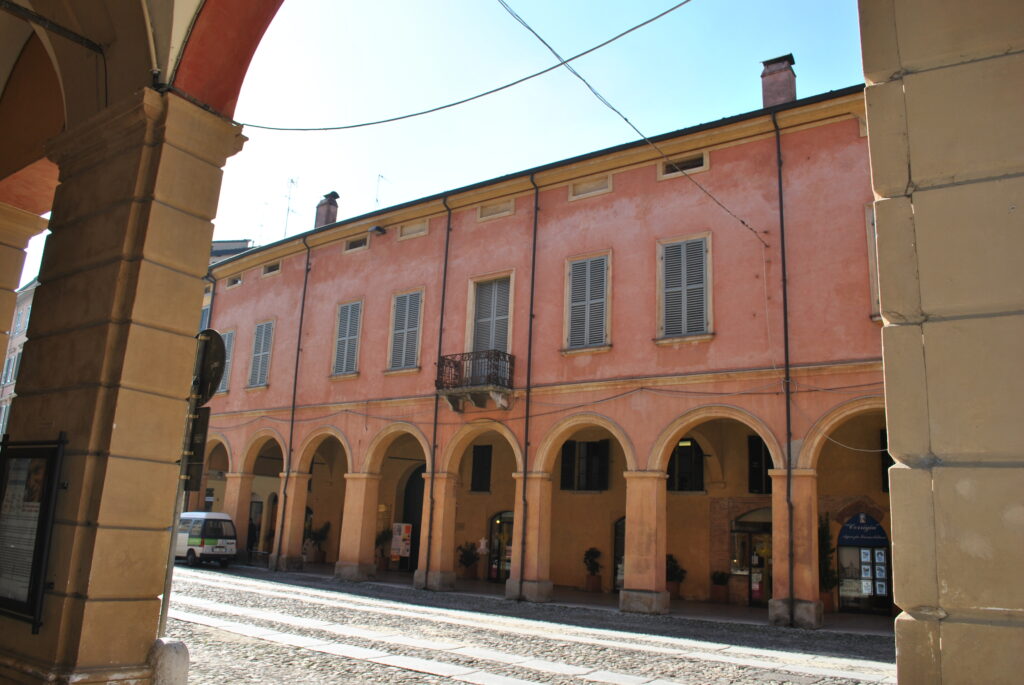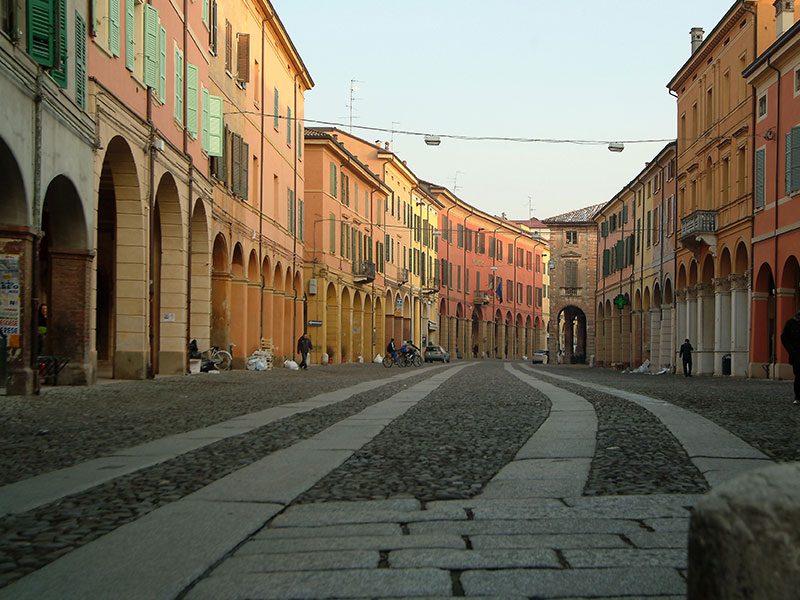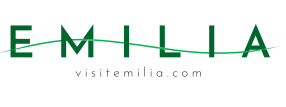Corso Mazzini – lato sud
Da Porta Modena a Porta Reggio – lato sud


Cuore della vita cittadina, Corso Mazzini (l’antica “Strada Maestra”) taglia Correggio da est ad ovest, con un caratteristico andamento sinuoso, delimitato ai lati dalle demolite Porta Reggio (ad ovest) e Porta Modena (ad est). Un andamento che rispecchia la funzione di cerniera tra i diversi nuclei che compongono l’antico centro storico. Fin dal medioevo sede di animati mercati, Corso Mazzini separava in origine il borgo di Castelvecchio (a sud), quartiere residenziale dei da Correggio, della nobiltà e cuore della vita religiosa (San Quirino) da Borgovecchio (a nord), animato borgo di artigiani e mercanti. I portici, ricostruiti tra Settecento ed Ottocento, sono ampi ed eleganti. Lungo il caratteristico ciottolato si snodano, a sud e a nord della strada, alcuni tra i più significativi palazzi correggesi. Sul lato Sud ricordiamo: Palazzo Ronca (ora Banca Popolare dell’Emilia Romagna), già ottocentesca sinagoga, Palazzo Bellelli (sede della Fondazione Bellelli – Contarelli, con importanti resti di una bottega e di affreschi tardoquattrocenteschi visibili sotto il portico), Palazzo Contarelli, Palazzo Cattini e, vicino all’antica Porta Reggio, la casa di Samuele Jesi, grande incisore del XIX secolo. Si dipartono da questo lato le vie Asioli, Roma, Montepegni, Antonioli e Viale Cottafavi.
The centre of city life, Corso Mazzini (formerly named “Strada Maestra”) winds through Correggio from east to west, bounded by the demolished Porta Reggio (to the west) and Porta Modena (to the east). Its path mirrors its function, linking the various districts of the old city centre. Ever since the Middle Ages, Corso Mazzini has housed bustling markets, and originally divided Castelvecchio (to the south), the quarter of the Da Correggio family, of the aristocracy and of religious life (San Quirino), from Borgovecchio (to the north), the busy quarter inhabited by craftsmen and merchants. The wide, elegant porticoes were rebuilt in the 18th and 19th centuries. On the southern and northern sides, the distinctive cobbled street is lined with some of the most important palaces in Correggio. On the southern side stand Palazzo Ronca (now Banca Popolare dell’Emilia Romagna), which was a synagogue in the 19th century, Palazzo Bellelli (headquarters of Fondazione Bellelli Contarelli, with extensive traces of an ancient workshop and of late 15th century frescoes visible under the portico), Palazzo Contarelli, Palazzo Cattini, and near the old gate of Porta Reggio,the house of Samuele Jesi, a great 19th-century engraver. Branching off from this side of the street are Via Asioli, Via Roma, Via Montepegni, Via Antonioli, and Viale Cottafavi.

Ultimo aggiornamento
11 Febbraio 2025, 15:47
 Museo Il Correggio
Museo Il Correggio 